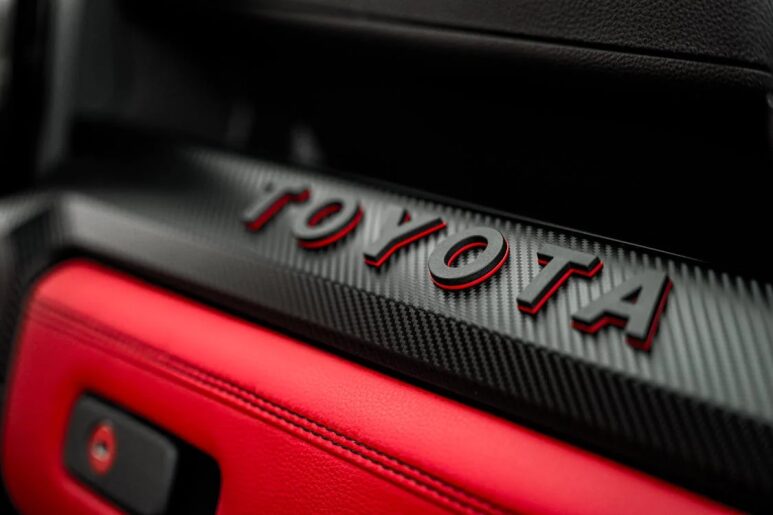Toyota’s Paradox: Why Record Sales Can’t Stop a Profit Collapse (The Real Crisis Isn’t Tariffs)
Toyota’s Paradox: Why Record Sales Can’t Stop a Profit Collapse
In the first half of 2025, Toyota, the undisputed king of the global auto industry, achieved a stunning milestone: its highest first-half sales in four years, a total of 5.16 million vehicles. By all accounts, the empire should be celebrating.
Instead, it’s facing a crisis.
The company’s financial reports for fiscal year 2025 paint a grim picture: operating profit fell by 10.4%, and net profit dropped by 3.6%. This startling disconnect between soaring sales and shrinking profits has sent shockwaves through the industry. While most analysts point to US tariffs as the primary culprit, my analysis from on the ground in China suggests that tariffs are just a symptom of a much deeper, more dangerous disease: the complete collapse of Toyota’s once-invincible business model in the world’s largest auto market.

The First Shock: The Manageable Pain of US Tariffs
Let’s be clear: the 15% US tariff on Japanese auto imports is a significant blow. It’s a substantial burden compared to the previous 2.5% rate. Toyota itself forecasts that this policy will cost the company a staggering 1.4 trillion yen (approximately $9 billion) in its next fiscal year, contributing to a projected 33.3% plunge in operating profit.
This is a serious challenge, forcing Toyota to accelerate its North American localization strategy, such as adding battery production lines in Canada. However, for a giant like Toyota, this is a calculable, manageable business risk. The real existential threat lies elsewhere.
The Second Shock: China’s ‘Profitability Black Hole’
This is where the paradox truly unfolds. In H1 2025, Toyota’s sales in China grew by 6.8% to a record 837,700 vehicles. On the surface, this looks like a success story.
However, sales and profitability are two very different things.
The FY2025 financial statements reveal the bloody truth behind this sales record. To achieve it, Toyota was forced to dive headfirst into the brutal price war raging in China. As a result, its China-based operating profit evaporated by a staggering 114.8 billion yen (over $700 million). The market that once served as its cash cow has turned into a profitability black hole, where every car sold comes at the cost of margin.
While Toyota’s profit per vehicle (¥22,900) still surpasses the Chinese industry average (¥15,000), it’s a shadow of its former self. Compounding this, the company is pouring over 745 billion yen (nearly $5 billion) annually into future technologies like batteries, hydrogen, and software. They are bleeding profit to maintain market share while simultaneously funding a desperately needed technological transformation.

A Giant’s Gamble: The 10 Million Vehicle Bet
Facing this two-front war, Toyota has made a drastic and risky move: raising its 2025 global production target to 10 million vehicles. This is a high-stakes gamble. The strategy appears to be leveraging its last great advantage—massive scale and global production capacity—to generate enough cash to survive this painful period of transition. They are trying to fund their future by flooding the world with the products of their past.
But this strategy is fraught with risk. In a world of supply chain uncertainty and weakening demand in key markets, this massive production target could easily turn into a massive inventory problem.
Conclusion: A New World Order, Where Adaptation Beats Tradition
Toyota’s crisis is more than just a story about tariffs or a bad quarter. It’s a textbook case of a dominant incumbent struggling to adapt to a paradigm shift. The twin forces of American protectionism and China’s hyper-competitive tech revolution have exposed the structural weaknesses of a titan that was too slow to embrace the EV and smart car era.
The path forward for Toyota and other Japanese automakers is perilous. They are forced into a costly and painful reinvention while under attack from all sides. The question is no longer whether they can maintain their throne, but whether they can transform fast enough to survive in the new world order they once helped build.
Deeper Dive: Recommended Reading for Deeper Insight
For those who wish to gain a deeper insight into the topics discussed today, I have personally reviewed and recommend the following professional book.
[The Innovator’s Dilemma by Clayton M. Christensen]
- Why I Recommend It: Today’s analysis of Toyota perfectly illustrates the core thesis of this classic book. It explains why successful, well-managed companies often fail to adapt to disruptive new technologies—like the EV and smart car revolution—that are currently upending the automotive world. This is essential reading to understand the “why” behind Toyota’s crisis.
- 👉 Read Book Here
This post contains affiliate links for Coupang Partners and Amazon Associates, from which I may earn a commission.
My AI Jazz Project: